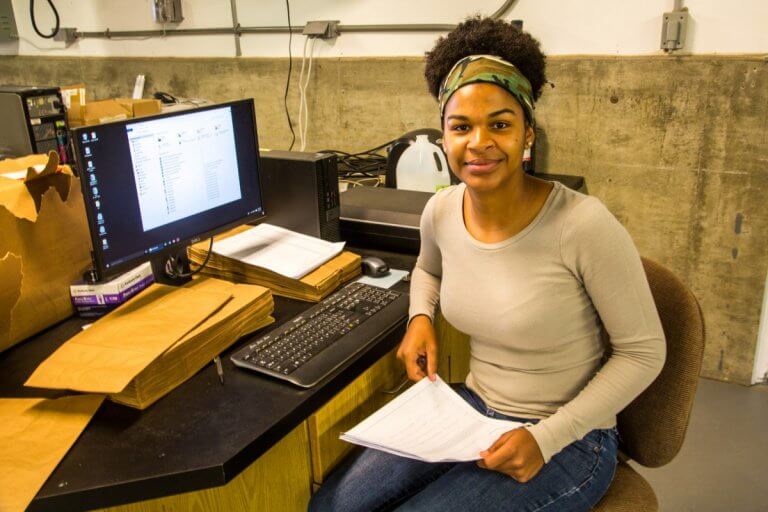
If you’re reading this and you’re not an international student in the US, you’re probably wondering what CPT or OPT means.
CPT stands for Curricular Practical Training, while OPT stands for Optional Practical Training.
International students who study in the US are allowed to do either CPT or OPT under their F-1 student visas to gain work experience.
The CPT or OPT are official work authorisations, since international sudents aren’t allowed to work off-campus.
International students can obtain employment through practical training as part of their U.S. studies. See how OPT and CPT grew from 2007 to 2017. @StudyinStates https://t.co/gHOqaQxii0
— ICE (@ICEgov) October 26, 2018
They both have many similarities which makes it difficult to see how they’re different, so let us break it down for you:
OPT is offered to students for a total of 12 months, although STEM students can get a 17-month extension under OPT.
The period for CPT is a bit more flexible, as there is no official limit for how long a student can do their CPT.
However, students will not be able to apply for the OPT if they have accumulated 12 months or more of full-time CPT.
CPT can be done part-time (less than 20 hours per week), which does not affect OPT eligibility.
The major difference between the two is that students can apply for OPT without having received a job offer yet, whereas students must already have an internship or job offer when applying for the CPT.
Another difference is that the work experience under CPT must be a part of students’ curriculum, meaning that the employment experience must offer credits in their curriculum.
Thus, students on CPT can work only with employers those are on Student and Exchange Visitor Information System (SEVIS) and I-20 list, while students on OPT can work with any employer as long as the job is related to their major or course of study.
CPT must be completed during the study period, while OPT can be done either during studies, known as Pre-Completion OPT, or after – which is known as Post-Completion OPT. Students are eligible to apply for CPT after completing a full academic year of study.
Most students opt for Post-completion OPT to gain temporary work authorisation once they graduate.
While it does appear that the OPT offers more flexibility to students, recent restrictions and visa regulations are making the typically straightforward process of applying for the OPT more complex.
Under the Trump administration, the US is making it increasingly difficult for students to receive the OPT cards that allow them to work.
Dean Jill Dolan sent a letter to international students who have sought OPT approval from the federal government for this summer, sharing the University’s concern at government processing delays and outlining steps the University is taking to assist them. https://t.co/c9JLj7tOBB
— Princeton University (@Princeton) June 18, 2019
Even if they already have a job offer, they aren’t able to legally work until the OPT is approved, so many students are being forced to return home without being able to complete their practical training.
Students only have a grace period of 90 days (to allow for processing) after graduation to apply for the OPT. They must secure a job that is scheduled to start after the 90 days is up, which is why processing delays are becoming an issue.
According to MercuryNews, “It’s taking up to five months for foreign college and university students to obtain “Optional Practical Training” work permits, leading to reported loss of internship opportunities.
“US Citizenship and Immigration said this week that a “surge” in requests for the OPT — widely used as a pathway to the controversial H-1B visa — has created a backlog and delays to the standard 90-day processing time. Wait times are running from four weeks to five months, the agency said.”
Too few institutions give students the option to use CPT which would be more efficient and cheaper than pre-completion OPT. This would also alleviate the backlog of OPT applications for graduates
— Desnor Chigumba (@DesnorC) June 17, 2019
In light of this, international students in the US are better off taking the CPT route so they can still gain work experience without the red tape.
For the CPT, the process is largely handled by the university rather than the government, so the application process is smoother.
US News recently reported, “Vietnamese national Minh Doan, who is pursuing a master’s in accountancy at the University of Denver, says the CPT process has been easy and straightforward. Although his graduate program did not require an internship, he participated in one for credit. He says the CPT process didn’t require a lot of application materials and that it took only a few days to receive approval.”
Doan said, “The fact that CPT is handled by individual universities rather than by the bureaucratic system of the government genuinely affects the efficiency of the process.”
It’s also quicker to receive CPT approval as processing times are not as long.
Laura Buhs, Assistant Director with the University of Denver’s International Student & Scholar Services, said, “We ask students to allow three to five business days for ISSS to review and process a CPT request if the request is complete.”
So if you’re still a student and considering gaining work experience during your time in the US, find out if there are any CPT opportunities available to you at your university.
Not only will you gain credit towards your degree, you’ll also earn valuable work experience that can influence your future career, without needing to waste precious time waiting for your application to be approved.
Liked this? Then you’ll love…
What you should know about unemployment during Optional Practical Training
The international student’s guide to the US-China trade war and how it impacts them







